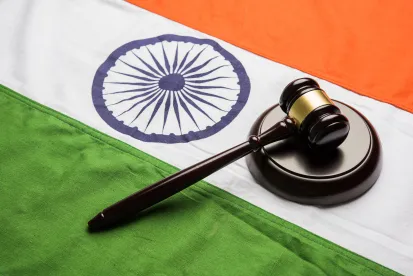Introduction
The dynamics of investor exits in the corporate landscape have become increasingly complex, involving a delicate interplay of contractual obligations and statutory provisions. This article delves into the intricacies of such exits and explores recent precedents that shed light on the challenges investors face when seeking a smooth and timely exit from their investments. In particular, we will examine instances where investors have attempted to exit using contractual arbitration clauses or by invoking the statutory mechanism available under the Insolvency Code, only to encounter hurdles that hindered their exit strategies. In the ever-evolving aspects of investor exits, it is essential for stakeholders to navigate these challenges and address potential roadblocks for a successful and seamless exit.
Recent precedents
Indus Biotech Case
In the case of Indus Biotech Private Limited vs Kotak India Venture Fund- I (“Indus”)1, Kotak had subscribed to the Optionally Convertible & Redeemable Preference Shares (“OCRPS”) of Indus, under a Share Subscription and Shareholders Agreement (“SSSA”). Indus wanted to go for a Qualified Initial Public Offering (“QIPO”), which process mandated conversion of preference shares into equity shares.2 As a part of the QIPO, Kotak elected to convert its preference shares into equity. However, during the process of conversion, a dispute in relation to the valuation of the OCRPS arose between the parties. Considering that there was a dispute at the time Kotak first attempted to exit, Kotak sought redemption of its OCRPS instead of conversion into equity. Although the redemption value became due, Indus failed to make the necessary payments to Kotak.
Consequently, Kotak as a financial creditor filed an application before the NCLT seeking initiation of insolvency proceedings against Indus (“Insolvency Application”). At the same time, Indus filed an application challenging the maintainability of the Insolvency Application on the ground that the parties had elected arbitration as the preferred dispute resolution mechanism under the SSSA (“Interim Application”).
The NCLT allowed the Interim Application filed by Indus and referred the parties to arbitration on the following grounds4:
- The right of Kotak to redeem the OCRPS when it had participated in the process to convert the same into equity shares had to be adjudicated;
- Valuation of the OCRPS and the date of QIPO also had to be adjudicated;
- Without adjudication of the aforementioned issues, it was not possible to determine whether there exists a ‘default’ under the Insolvency Code.
- Lastly, Indus was a solvent, debt-free and profitable company, which should not unnecessarily be pushed into insolvency.
Aggrieved by the order of the NCLT, Kotak moved the Supreme Court.5 The Supreme Court cited ongoing discussions between the parties a) on conversion value of OCRPS and b) on the modalities for allocation of equity shares, to hold that it would have been premature to declare the actions of Indus as a ‘default’ under the Insolvency Code.6 Basis this reasoning, the Supreme Court upheld the decision of the NCLT.
Analysis
The NCLT had cited extraneous circumstances like Indus being a solvent, debt-free and profitable entity while referring the parties to arbitration. There was minimal discussion on relevant factors like a) the nature of claim of Kotak and whether the same would constitute a financial debt, b) whether Kotak retained its right to seek redemption post its attempts at converting its OCRPS into equity, and c) whether Indus committed a “default” under the Insolvency Code.
An operational creditor has to prove the absence of a “pre-existing dispute” while seeking initiation of insolvency proceedings.7 However, for a financial creditor no such statutory pre-condition is provided under the Insolvency Code. In the absence of legislative guidance, the NCLT has wide discretionary powers to entertain various extraneous factors like a) solvency of the corporate debtor and b) disputes pertaining to claim amount, while deciding upon the maintainability of an insolvency application.
In order to narrow the scope of judicial discretion, there can be appropriate legislative amendment by which the consideration of a pre-existing dispute could also be made applicable for financial debts. Such disputes should be defined to encompass only those circumstances wherein the existence of debt and default become prima facie questionable. In cases where a dispute pertaining to the existence of a debt or a default has been successfully established, only then the NCLT ought to refer such disputes for adjudication.
In the present factual circumstances, the NCLT could have taken a prima facie view that the SSSA disentitled Kotak from seeking redemption of the OCPRS post seeking conversion of the same into equity. If this view were to be taken, then the NCLT’s decision to refer parties to arbitration would have been justifiable, as the disputes between Indus and Kotak would impact the existence of debt and default.
Anupam Mittal Case
In the case of Anupam Mittal v Westbridge II Investment Holdings (“Anupam Mittal case”)8, Westbridge II was a private equity firm holding certain shares in a company called People Interactive (India) Private Limited (“PIPL”). Anupam Mittal was the managing director and minority shareholder of PIPL.9 The Shareholder’s Agreement (“SHA”) provided that if an Initial Public Offering (“IPO”) was not completed within 5 years from the closing date,10 then Westbridge could redeem its shares and, if necessary, “drag” all shareholders to sell their shares to a third-party. Disputes arose between the parties when Westbridge sought to exit PIPL. Consequently, Westbridge initiated arbitration proceedings in Singapore seeking to enforce its drag along rights, since no IPO was completed within 5 years from the closing date (“Arbitration Proceedings”). A more detailed factual background and analysis of the dispute has been covered in our previous hotline.
Anupam Mittal filed a petition alleging oppression and mismanagement (“O&M”) under Sections 241 and 242 of the Companies Act, 2013 (“Companies Act”), before NCLT to injunct Westbridge from interfering in the management of the Company. Westbridge approached the Singapore High Court11 seeking an ex-parte anti-suit injunction restraining Anupam Mittal from continuing proceedings before the NCLT, which order was granted in favour of Westbridge.12 In response, Anupam Mittal applied for an anti-enforcement injunction before the Bombay High Court. This injunction was granted on the basis of various reasons including that the NCLT has exclusive jurisdiction to decide cases pertaining to O&M.13
Shortly thereafter, Anupam Mittal approached the NCLT seeking an anti-arbitration injunction against the on-going Arbitration Proceedings. Although the arbitration was at the stage of hearing, the NCLT granted the anti-arbitration injunction on the ground that (i) the NCLT has the power to issue an anti-arbitration injunction in light of Section 430 of the Companies Act and Rule 11 of the NCLT Rules, 2016, and (ii) continuance of the arbitration proceedings would impact the ability of the NCLT to grant the reliefs in the O&M Petition.14
Analysis
In the Anupam Mittal case, Westbridge had initiated arbitration proceedings with the intention of securing an exit. However, the NCLT had granted an anti-arbitration injunction in the ongoing O&M proceedings, thereby restraining Westbridge from continuing with its endeavor to exit PIPL.
It is debatable as to whether the factual circumstances in the Anupam Mittal case warranted an anti-arbitration injunction. However, there are multiple instances where tribunals have refused to grant similar anti-arbitration injunctions and on the contrary stalled O&M proceedings and referred the parties to arbitration.15
A conjoint reading of some of these decisions show that if the following factors are considered, it could be possible for parties to seek reference to arbitration from O&M proceedings: (a) the parties to the arbitration agreement are also parties to the O&M petition, (b) the nature of the real dispute and the relief being sought are contractual and therefore arbitrable, c) the continuation of the arbitral process would not render the O&M proceedings infructuous, and d) the factual circumstances of the dispute fall outside the scope exclusive jurisdiction of the NCLT.
Therefore, although it may not be possible to pre-empt initiation of O&M proceedings, it could be possible to develop a legal strategy so as to satisfy the above-mentioned criteria and continue with arbitration proceedings.
Footnotes
[1] Indus Biotech Pvt. Ltd. v. Kotak India Venture Fund-I, CP(IB) No. 3077/2019 (“Indus NCLT judgement”)
[2] Regulation 5(2) of the Securities and Exchange Board of India (Issue of Capital & Disclosure Requirements) Regulations, 2018 [SEBI ICDR Regulations].
[3] National Company Law Tribunal, Principal Bench (New Delhi).
[4] Paras 5.14-5.15, Indus NCLT Judgement.
[5] Indus Biotech Pvt. Ltd. v. Kotak India Venture (Offshore) Fund & Ors., (2021) 6 SCC 436 (“Indus SC Judgement”)
[6] Paras 28-33, Indus SC Judgement.
[7] Section 9, Insolvency Code.
[8] [2023] SGCA 1.
[9] As of 2021, Westbridge owned majority of the shares with a shareholding of 44.38% in PIPL, while Anupam Mittal held 30.26% of the shares in PIPL.
[10] As defined under the Shareholders Agreement (SHA)
[11] [2021] SGHC 244, Order dated 26 October 2021.
[12] Upheld by Order dated 6 January 2023 in [2023] SGCA 1.
[13] Anupam Mittal v. PIPL, IA No. 1010/2021 in Suit No. 95/2021, Bombay High Court, Order dated 11 September 2023.
[14] Anupam Mittal v PIPL and others, CA/392/2023 in CP/92(MB)2021, Order dated 15 September 2023, NCLT, Mumbai Bench.
[15] Nityanand Sharma in the matter of Chaitra Gowdar Chidanand v. Get Simpl Technologies Private Limited & Ors., [CA-67/2022 IN CP.09(MB)2022]; Macquarie SBI Infrastructure Investments (P.) Ltd. v. K. Sadananda Shetty, [2021 SCC OnLine NCLAT 959]; Rishima SA Investments LLC v. Shristi Infrastructure Development Corpn. Ltd., [2017 SCC OnLine NCLT 12082].






 />i
/>i

